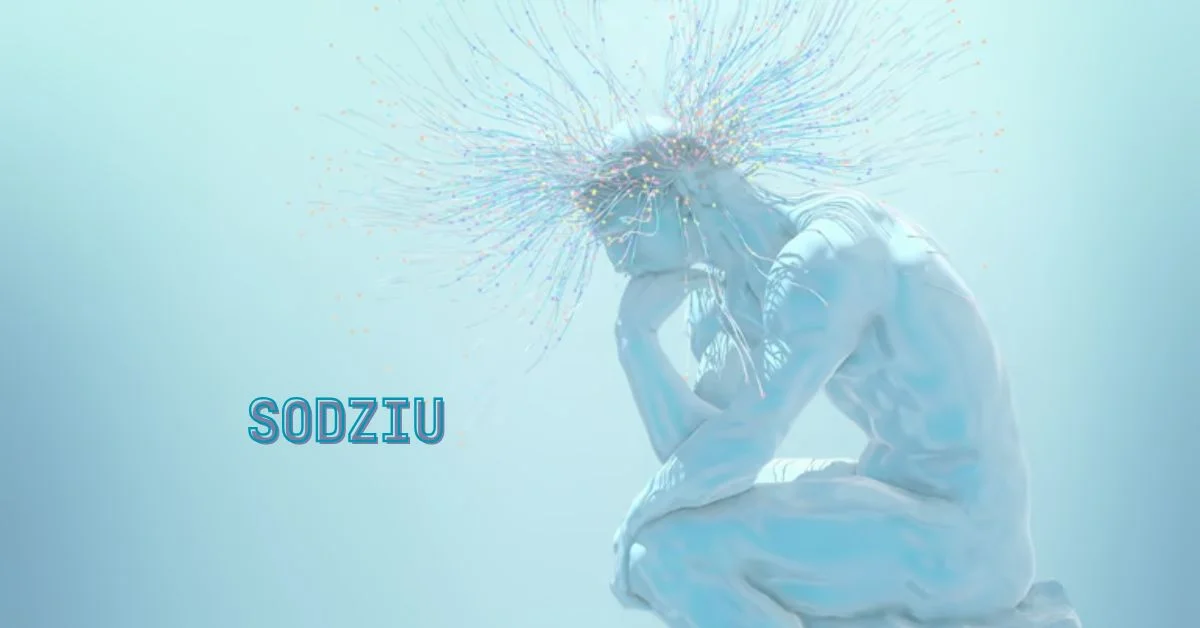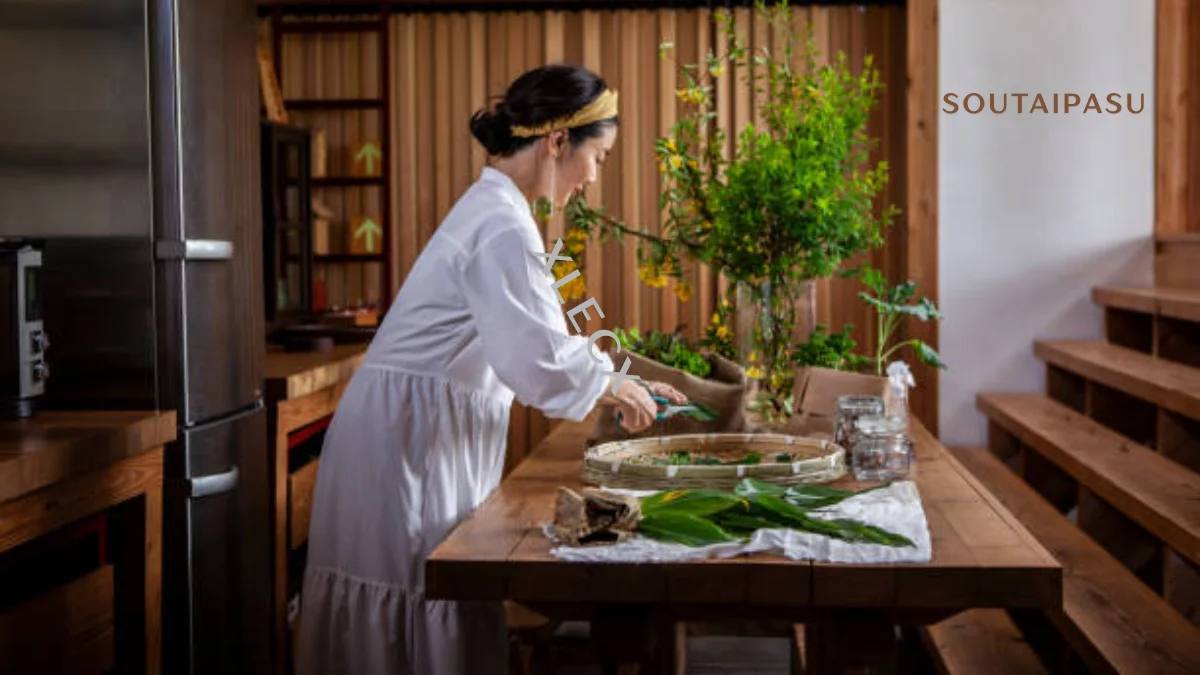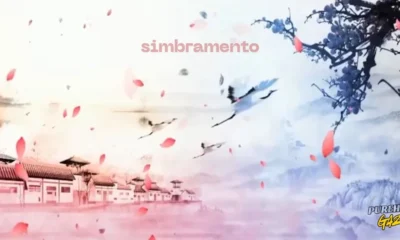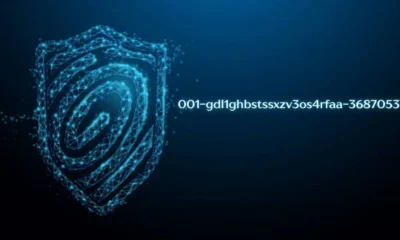General
Sodziu: Understanding Its Place in Science and Philosophy Today

Introduction to Sodziu
Sodziu is a term that has been gaining traction in both scientific and philosophical circles. But what exactly does it mean? As we delve into this intriguing concept, we’ll uncover its origins, its impact on modern science, and how it intertwines with deep philosophical questions. In a world increasingly driven by innovation and inquiry, understanding sodziu might just hold the key to unlocking new dimensions of thought and exploration. Whether you’re a seasoned scholar or simply curious about emerging ideas, this exploration promises to be enlightening. Let’s embark on this journey together!
The Origins and History of Sodziu
Sodziu emerged as a concept deeply rooted in both ancient traditions and modern inquiry. Its earliest mention can be traced back to philosophical texts where thinkers pondered the essence of existence.
Throughout history, sodziu has been interpreted through various lenses. Different cultures have contributed their unique perspectives, enriching its meaning. These combined ideas formed the foundation for modern-day debates.
The Renaissance period saw a resurgence of interest in sodziu. Scholars began to explore its implications more rigorously, linking it with emerging scientific discoveries.
By the 20th century, sodziu had transformed into a focal point for interdisciplinary dialogue between science and philosophy. The quest to understand it continues today, reflecting humanity’s enduring curiosity about our place in the universe.
The Role of Sodziu in Modern Science
Sodziu has emerged as a pivotal concept in contemporary scientific discussions. Its multifaceted nature allows researchers to explore various disciplines, from quantum physics to biology.
In the realm of physics, sodziu serves as a framework for understanding complex systems. Scientists leverage it to model interactions at microscopic levels. This adds depth to existing theories and offers fresh perspectives.
Biologists are also embracing sodziu’s principles in evolutionary studies. By applying these concepts, they investigate adaptive behaviors and ecological dynamics with increased precision.
Moreover, interdisciplinary collaborations thrive on sodziu’s insights. Researchers from different fields unite under its umbrella, driving innovation and fostering groundbreaking discoveries.
As science advances, sodziu remains a leading focus in ongoing research. It challenges traditional paradigms while inspiring new methodologies that reshape our understanding of the universe.
The Philosophical Implications of Sodziu
Sodziu prompts profound questions about the nature of existence. It challenges traditional views and invites a reevaluation of what we consider real.
Philosophers have long debated the essence of being, and sodziu adds a fresh layer to this discourse. It blurs the lines between objective reality and subjective perception, urging thinkers to reconsider their assumptions.
The implications extend beyond mere theory; they touch on ethics, consciousness, and human experience itself. In what ways does sodziu shape our perception of truth? Can it reshape moral frameworks?
Engaging with sodziu encourages an exploration into how interconnected everything is—life, thought, and matter all intertwine in unexpected ways. This perspective not only enhances philosophical inquiry but also enriches personal reflection on one’s place in the universe.
As discussions around sodziu evolve, they inspire deeper introspection into our beliefs and values as individuals navigating complex realities.
Controversies and Criticisms Surrounding Sodziu
Sodziu has sparked intense debates within both scientific and philosophical communities. Critics argue that its foundational principles lack empirical support, making it difficult to validate in rigorous research settings.
This skepticism is often fueled by claims of overreach. Some proponents tend to apply sodziu concepts beyond their intended scope, leading to misunderstandings about its true implications. This misinterpretation can foster confusion among inquisitive minds eager for clarity.
Additionally, the terminology surrounding sodziu can be misleading. Vagueness allows for a wide range of interpretations, which complicates discourse further. As various factions adopt contrasting views on its significance and applications, tensions arise.
Moreover, some believe that the enthusiasm for sodziu overshadows more established theories deserving attention. This diversion raises questions about resource allocation in ongoing studies and whether newer ideas genuinely advance understanding or simply distract from proven methodologies.
Current Research and Studies on Sodziu
Current research on sodziu is thriving across multiple disciplines. Scientists and philosophers are diving deep into its complexities, examining how it intersects with emerging technologies.
One exciting area of study involves the integration of sodziu within artificial intelligence frameworks. Researchers are exploring how these concepts can enhance machine learning processes and ethical decision-making.
Moreover, recent studies in cognitive science investigate sodziu’s influence on human perception and consciousness. These insights could reshape our understanding of thought patterns and behavior.
In academic circles, numerous papers are being published that challenge traditional interpretations of sodziu. This ongoing discourse fuels vibrant debates about its implications for future scientific inquiry.
Conferences dedicated to this topic are drawing attention from leading minds across various fields, showcasing a growing interest in what sodziu means for humanity’s intellectual landscape today.
The Future of Sodziu in Scientific and Philosophical Discourse
The future of sodziu presents a fascinating crossroads in both science and philosophy. As research expands, new methodologies will likely emerge. This could reshape how we understand complex systems.
Interdisciplinary collaboration is on the rise. Scientists and philosophers are beginning to engage with each other’s frameworks more than ever before. This cultivates an ideal environment for groundbreaking ideas about sodziu to flourish.
Moreover, advancements in technology may offer fresh insights into its properties. Data analytics and machine learning have opened doors previously thought inaccessible. These tools can enhance our comprehension of sodziu’s intricate dynamics.
Public discourse around sodziu is also gaining momentum. Increased interest from various sectors encourages broader discussions about its implications. As society grapples with these concepts, the relevance of sodziu in daily life becomes undeniable.
Educational programs incorporating sodziu could inspire new generations of thinkers, positioning it as a pivotal element in future intellectual landscapes.
Conclusion: Embracing the Complexity of Sodziu
Sodziu stands as a fascinating intersection between science and philosophy, inviting us to explore the depths of human understanding. Its origins remind us of our ongoing quest for knowledge, rooted in centuries of inquiry. Modern science continues to unravel the intricacies of sodziu, offering fresh insights that challenge established paradigms.
Philosophically, sodziu encourages reflection on existence and consciousness. It pushes boundaries and evokes deep questions about reality itself. However, it is not without controversy; criticisms arise as scholars debate its validity and implications.
Current research showcases a vibrant landscape where ideas surrounding sodziu are continuously evolving. As scientists delve deeper into its mysteries, new discoveries emerge regularly—each adding layers to our comprehension.
The future holds promise for further exploration within both scientific and philosophical realms. Embracing the complexity of sodziu can lead to transformative insights in how we perceive ourselves and the universe around us. This intricate subject remains an invitation for curious minds eager to engage with life’s profound questions.
General
Renee Youtslur Wilkins: Life and Legacy Behind Shaggy 2 Dope

Introduction to Renee Youtslur Wilkins and her connection to Shaggy 2 Dope
Renee Youtslur Wilkins is a name that might not ring a bell for everyone, but her impact on the music industry, particularly in the world of hip-hop and underground culture, is undeniable. As the life partner of Shaggy 2 Dope from Insane Clown Posse, Renee’s story intertwines with one of the most iconic figures in alternative rap. Her journey through love, creativity, and community has left an indelible mark on fans and fellow artists alike. Discover how this remarkable woman played a crucial role in shaping not just Shaggy’s career but also the vibrant legacy of one of music’s most unconventional movements.
Early Life and Influences on Renee
Renee Youtslur Wilkins was born in a small town, surrounded by the vibrant sounds of music. Growing up, she absorbed various genres that shaped her artistic sensibilities. Her family often held weekend gatherings filled with live performances and jam sessions.
These early experiences ignited a passion for creativity within her. Renee found herself drawn to powerful lyrics and innovative rhythms, which later influenced her work alongside Shaggy 2 Dope.
She faced challenges during her formative years but used those struggles as fuel for self-expression. Art became an escape route through life’s ups and downs, allowing Renee to cultivate resilience.
Influenced by local artists and musicians, she developed a unique perspective on storytelling in music. This foundation laid the groundwork for an extraordinary journey ahead setting the stage for collaboration with iconic figures like Shaggy 2 Dope in the world of hip-hop.
Meeting Shaggy 2 Dope and their Relationship
Renee Youtslur Wilkins first crossed paths with Shaggy 2 Dope during a local music event in Detroit. The energy was electric, and the two were drawn to each other almost immediately. Their shared love for alternative music and performance art became the foundation of their connection.
As they spent time together, their bond deepened. Renee admired Shaggy’s passion for his craft, while he appreciated her unwavering support and creativity. They often collaborated on various projects, blending their unique styles.
Their relationship wasn’t just personal; it flourished creatively as well. Together, they pushed boundaries within the underground music scene. This synergy would later contribute to the dynamic identity of Insane Clown Posse.
Through laughter and challenges alike, Renee stood by Shaggy’s side as both a confidante and collaborator in an ever-evolving landscape of sound and expression.
Renee’s Role in the Success of Insane Clown Posse
Renee Youtslur Wilkins played a pivotal role in shaping the trajectory of Insane Clown Posse. Her influence extended far beyond just personal connections; she was a creative force within the group.
From early brainstorming sessions to hands-on involvement in their music videos, her artistic vision helped define their unique aesthetic. Renee’s knack for understanding fan culture translated into marketing strategies that resonated deeply with the Juggalos.
She also served as a mediator during conflicts, ensuring harmony within the team and fostering collaboration. It was this behind-the-scenes dedication that laid the groundwork for their explosive success.
Renee’s impact is evident in every aspect of ICP’s evolution—from lyric development to live performances. Her contributions have left an indelible mark on their legacy, solidifying her place alongside them in music history.
Controversies Surrounding Renee and Shaggy 2 Dope
Renee Youtslur Wilkins and Shaggy 2 Dope have not been strangers to controversy throughout their careers. The duo’s vibrant personalities often sparked discussions that transcended mere fandom.
Rumors of tumultuous moments between them circulated frequently. Some speculated about the dynamics of their partnership, questioning how personal relationships intertwined with professional ambitions.
Media coverage sometimes painted a distorted picture, sensationalizing conflicts for clicks. This left fans divided on where to place blame or support.
Yet through it all, both Renee and Shaggy maintained a firm commitment to their artistry. They faced scrutiny head-on, using it as fuel rather than letting it hinder their progress.
Despite external noise, they focused on building an empire rooted in creativity and expression. Their connection evolved amidst challenges, showcasing resilience in the face of adversity within the music scene.
Legacy and Impact on the Music Industry
Renee Youtslur Wilkins has left an indelible mark on the music industry, particularly through her work with Shaggy 2 Dope. Her unique vision and creative input shaped the sound of Insane Clown Posse, making it a cultural phenomenon.
Wilkins’ contributions extended beyond production; she helped craft the group’s identity. The blend of horrorcore and humor that characterized their style owes much to her influence. She pushed boundaries, challenging norms within the genre.
Her legacy is evident in how new artists draw inspiration from ICP’s bold approach to music and performance art. Today’s underground scene often echoes themes pioneered by this dynamic duo.
Moreover, Renee’s story exemplifies resilience in an industry frequently dominated by men. She carved out a space for herself and other women, fostering a spirit of inclusivity that continues to inspire many aspiring musicians today.
Conclusion
Renee Youtslur Wilkins remains a pivotal figure in the story of Shaggy 2 Dope and Insane Clown Posse. Her influence spans beyond her early life experiences to the lasting bonds she formed with those around her. The unique relationship between Renee and Shaggy 2 Dope showcases how personal connections can drive creative success.
As a vital part of the Insane Clown Posse’s journey, Renee helped shape their identity within the music industry. Through various challenges, both professional and personal, she maintained a presence that resonated with fans and contributed to their legacy.
While controversies may have surrounded them over time, they only served to highlight the complexity of their lives and careers. Today, Renee’s impact continues as new generations discover her story alongside that of Shaggy 2 Dope.
Her legacy is etched into both history and hearts alike an enduring testament to resilience, creativity, and friendship in an ever-evolving musical landscape.
General
Panantukan DVDs: Master Filipino Dirty Boxing at Home

Are you looking to add a unique skill to your martial arts repertoire? Ever heard of Panantukan? This intriguing and effective form of Filipino dirty boxing combines striking techniques with fluid movement, offering both self-defense skills and physical fitness. With the rise in popularity of martial arts training at home, many enthusiasts are turning to Panantukan DVDs as a way to dive into this captivating discipline from the comfort of their living rooms. Whether you’re a seasoned fighter or just starting out, mastering these techniques can enhance your abilities and empower you on multiple levels. Let’s explore what makes Panantukan so special and how you can start learning today!
What is Panantukan?
Panantukan, also known as “dirty boxing,” is a Filipino martial art focused on striking techniques. It focuses on close-range combat and emphasizes quick, powerful strikes using fists, elbows, knees, and even headbutts.
What sets Panantukan dvds apart is its adaptability. Practitioners learn to integrate various techniques seamlessly into their movements. This allows for fluid transitions between offensive and defensive actions.
The beauty of Panantukan lies in its practicality. It’s not just about punches; it teaches fighters how to use their bodies effectively in real-world scenarios. Whether you’re defending against an attacker or countering an opponent’s moves in sport fighting, these skills are invaluable.
Additionally, Panantukan incorporates elements of footwork and movement that enhance agility and balance. This makes it suitable for all fitness levels while providing an engaging way to develop coordination and strength through practice.
The History and Origins of Panantukan
Panantukan, often referred to as Filipino Dirty Boxing, has deep roots in the rich tapestry of Filipino martial arts. It emerged from a necessity for self-defense during a time when confrontations were common.
The practice blends various influences, including indigenous fighting styles and elements borrowed from Western boxing. This fusion created a unique set of techniques that prioritize efficiency and practicality.
Historically, Panantukan was not just about striking; it integrated grappling and trapping techniques too. Practitioners learned to use their surroundings effectively—making this art form both adaptive and versatile.
As the Spanish colonized the Philippines, local fighters began to incorporate these skills into guerrilla tactics against oppressors. Through generations, Panantukan evolved with each practitioner adding their flair while preserving its core principles. Today, its legacy continues through dedicated students eager to master this dynamic fighting style at home or in training halls worldwide.
Benefits of Learning Panantukan
Learning Panantukan offers a multitude of benefits that extend beyond just self-defense. This unique Filipino martial art emphasizes practical techniques, making it incredibly effective in real-world situations.
One major advantage is its adaptability. Practitioners can seamlessly incorporate Panantukan into their existing training regimens, enhancing their overall skill set.
Moreover, the focus on striking and clinching builds confidence and improves physical fitness. It engages different muscle groups while also boosting cardiovascular endurance.
Mental discipline plays a key role too. As students master the intricacies of movement and timing, they develop sharper reflexes and better situational awareness.
Additionally, learning Panantukan fosters a sense of community among practitioners. Engaging with others who share similar interests creates lasting friendships and support networks that extend beyond the dojo or gym environment.
The Importance of Proper Technique in Panantukan
Proper technique is crucial in Panantukan, as it defines the effectiveness of your strikes and defenses. Mastering the fundamentals ensures that you can deliver powerful blows while minimizing risk to yourself.
When practicing dirty boxing techniques, precision plays a vital role. It enhances accuracy and control during high-pressure situations. A well-executed technique not only maximizes impact but also reduces the chance of injury.
Moreover, understanding body mechanics aids in developing fluid movement. This allows practitioners to seamlessly transition between offensive and defensive tactics. The right technique fosters confidence, making each encounter feel more manageable.
Training with an emphasis on proper form leads to muscle memory development. This means you’ll instinctively react correctly when faced with real-life scenarios. Embracing good habits from the start sets a strong foundation for future growth in your Panantukan journey.
Overview of the Panantukan DVDs
The Panantukan DVDs offer a unique way to explore the art of Filipino dirty boxing from home. Designed for all skill levels, these instructional videos break down techniques into manageable segments.
Each DVD features expert instructors who guide you through basic to advanced maneuvers. You’ll learn striking methods, clinch work, and defensive tactics that can be seamlessly integrated into your training regimen.
What sets these DVDs apart is their focus on real-world application. Techniques are presented with an emphasis on practicality and adaptability in various combat situations.
Visual demonstrations enhance understanding, making it easier to grasp complex movements. The structured format allows you to progress at your own pace while reinforcing proper technique along the way.
With clear explanations and engaging content, mastering Panantukan has never been more accessible. Whether you’re a beginner or looking to refine your skills, these DVDs serve as an invaluable resource for any martial arts enthusiast.
Step-by-Step Guide to Mastering Filipino Dirty Boxing at Home
To master Panantukan at home, start by creating a dedicated training space. A clear area allows you to move freely and focus on your techniques without distractions.
Begin with the basics. Familiarize yourself with footwork drills that emphasize agility and balance. Practicing movement will enhance your ability to strike effectively.
Next, work on the fundamental strikes: punches, elbows, knees, and open-hand techniques. Use a mirror or video recordings to monitor your form as you practice these essential skills.
Incorporate shadow boxing into your routine. This helps develop combinations while improving speed and fluidity in movements.
As you progress, add partner drills if possible. Find someone willing to train with you for practicing counter-attacks and defensive maneuvers.
Invest time in conditioning exercises specific to combat sports. Building strength and stamina is crucial for executing techniques efficiently during sparring sessions or competitions.
Conclusion
Panantukan DVDs offer a unique opportunity for martial arts enthusiasts to delve into the world of Filipino Dirty Boxing from the comfort of their homes. This traditional fighting style not only enhances your self-defense skills but also provides a thorough workout that engages both body and mind.
By understanding the rich history and origins of Panantukan, you’ll appreciate its significance in Filipino culture and how it has evolved over time. The benefits are plentiful, including improved coordination, heightened awareness, and confidence in confrontational situations.
Mastering proper technique is crucial in any combat sport; Panantukan is no exception. With dedicated practice using these DVDs, you can refine your skills effectively while avoiding common pitfalls associated with self-taught approaches.
The step-by-step guidance found within each DVD ensures that learners at all levels can grasp the fundamentals before progressing to more advanced techniques. Whether you’re looking to improve your fighting ability or simply want an engaging way to stay fit, these resources cater to everyone.
Exploring Panantukan through these instructional videos not only enriches your training regimen but opens doors to a deeper appreciation for this incredible martial art form.
General
Soutaipasu: Origins, Uses, and Cultural Culinary Value

Introduction to Soutaipasu
Soutaipasu is more than just a dish; it’s a vibrant tapestry woven into the culinary fabric of its culture. With roots that stretch deep into history, this unique ingredient has captured the hearts and palates of many around the globe. Whether you’re a seasoned chef or an adventurous home cook, understanding soutaipasu can unlock new flavors and experiences in your kitchen.
In this exploration, we’ll delve into its origins, cultural significance, and how it’s traditionally prepared. Plus, you’ll discover modern twists on classic recipes that bring soutaipasu to life in exciting ways. Get ready to expand your culinary horizons as we uncover what makes soutaipasu truly special!
The History and Origins of Soutaipasu
Soutaipasu has roots deeply intertwined with the culinary traditions of Southeast Asia. Believed to have originated in the lush landscapes of Thailand, it was initially a humble dish made by local farmers.
As trade routes expanded, so did its popularity. The unique blend of flavors attracted attention from neighboring countries. This led to variations that incorporated regional ingredients and spices.
Historically, soutaipasu served as both sustenance and a symbol of community gatherings. Families would prepare it during festivals or special occasions, celebrating not only food but also togetherness.
With time, this dish evolved into various forms while retaining its essence. Its journey reflects the rich cultural tapestry of the region where it first emerged. Each bite tells a story steeped in tradition and shared heritage.
Cultural Significance and Culinary Uses of Soutaipasu
Soutaipasu holds a special place in the culinary traditions of various cultures, particularly in regions where it has been grown for generations. Its rich flavor and unique texture make it a beloved ingredient in traditional dishes, often elevating simple meals to extraordinary experiences.
In many communities, soutaipasu is not just food; it’s part of cultural rituals and celebrations. Families gather around tables adorned with this versatile ingredient during festivals, reflecting their heritage and fostering connections.
Chefs appreciate its adaptability. Soutaipasu can be roasted, grilled, or incorporated into stews and sauces. The subtle earthy notes enhance both savory dishes and sweet desserts alike.
Moreover, its presence on menus signifies authenticity. Restaurants that feature soutaipasu showcase their commitment to preserving culinary traditions while introducing diners to the diverse flavors of global cuisine.
Traditional Preparation Methods
Traditional preparation methods for soutaipasu are deeply rooted in various cultural practices. At its core, the process begins with selecting high-quality ingredients. Fresh vegetables, grains, and spices play a vital role.
Cooking often involves slow simmering to enhance flavors. This technique allows the rich tastes to meld beautifully over time. Firewood or charcoal may be used for an authentic smoky flavor that adds depth.
Some recipes incorporate unique fermentation processes, which not only preserve but also elevate the dish’s character. The natural tang from fermented components brings a delightful complexity.
Moreover, communal cooking is common when preparing soutaipasu. Families gather around large pots, sharing stories while stirring together fragrant concoctions an experience that strengthens bonds and traditions alike. Each region boasts its own variations of these methods, reflecting local resources and customs seamlessly into every bite.
Modern Adaptations and Fusion Recipes
Soutaipasu is no longer confined to traditional dishes. Chefs around the globe are experimenting with this ingredient, blending it into modern culinary creations.
One popular adaptation incorporates soutaipasu into gourmet salads. The subtle flavor enhances fresh greens and adds a unique twist that elevates any salad experience.
Another exciting fusion recipe features soutaipasu-infused pasta dishes. Imagine creamy sauces with hints of nuttiness it’s a delightful surprise for your taste buds.
Street food vendors have also embraced soutaipasu, crafting delicious tacos or wraps that fuse local flavors with this versatile ingredient. It’s become a trendy option among foodies seeking something different.
Desserts aren’t left out either! Innovative bakers incorporate ground soutaipasu in cookies and cakes, creating an unexpected yet mouthwatering treat that keeps patrons coming back for more.
Health Benefits of Soutaipasu
Soutaipasu is not just a flavorful addition to your meals; it also packs several health benefits. Rich in essential nutrients, this ingredient can help boost your immune system and promote overall wellness.
One of the standout features of soutaipasu is its high antioxidant content. Antioxidants play a crucial role in combating free radicals, potentially reducing the risk of chronic diseases.
Additionally, soutaipasu contains anti-inflammatory properties that may aid in digestion and reduce bloating. This can be particularly beneficial for those with sensitive stomachs or digestive disorders.
Packed with vitamins and minerals, including iron and calcium, soutaipasu supports bone health and energy levels. Including it in your diet might enhance nutrient absorption as well.
For anyone looking to improve their dietary habits while enjoying unique flavors, soutaipasu offers both taste and nutrition without compromise.
Where to Find and Try Soutaipasu
If you’re eager to try soutaipasu, start by exploring local Asian markets. Many specialty stores carry the ingredients needed for this delightful dish. Freshness is key, so look for vendors that pride themselves on quality.
Restaurants offering authentic regional cuisines are another great option. Seek out eateries known for their diverse menus or those specializing in lesser-known dishes. Don’t hesitate to ask the staff about their take on soutaipasu; they might share a unique family recipe.
Food festivals and cultural events often showcase traditional foods like soutaipasu. These gatherings provide an excellent opportunity to taste various preparations while enjoying vibrant community atmospheres.
Consider joining cooking classes focused on international cuisine. Learning hands-on can deepen your appreciation and understanding of how to prepare souatpaisu authentically at home!
Conclusion
Soutaipasu is more than just a culinary delight; it embodies the rich tapestry of culture and tradition from which it originates. Its unique flavors and textures have captivated taste buds for generations, making it a staple in various cuisines. The history of soutaipasu speaks to its enduring legacy, rooted deeply in the customs and practices of communities.
As people explore traditional preparation methods alongside modern adaptations, soutaipasu’s continues to evolve while honoring its heritage. Fusion recipes are breathing new life into this cherished dish, inviting everyone to experience its versatility in exciting ways.
Furthermore, with health benefits that contribute positively to well-being, incorporating soutaipasu’s into your diet can be both delicious and nutritious. Whether you’re seeking authenticity or innovative takes on classic recipes, there’s something for everyone when it comes to enjoying this beloved food.
For those eager to try soutaipasu’s firsthand or find new inspirations at home, local markets and restaurants offer an array of options showcasing this remarkable ingredient. With each bite, you’re not just tasting food; you’re experiencing a piece of culture that has thrived through time. Embrace the journey that souatipas brings it’s one worth savoring.
-

 Sports5 months ago
Sports5 months agoTennessee Titans vs Texans Match Player Stats: Game Analysis & Top Performers
-

 Tech5 months ago
Tech5 months agoQuikconsole Com: Revolutionizing Web-Based Server Management for Devs and Sysadmins
-

 General4 months ago
General4 months agoUnited Airlines Flight UA770 Emergency Diversion Explained
-

 Business4 months ago
Business4 months agomyfastbroker .com Guide: Find Trusted Brokers for Smart Trading
-

 General4 months ago
General4 months agoSimbramento: Ancient Art of Mindfulness, Movement, and Flow
-

 Business5 months ago
Business5 months agoCrypto 30x .com Guide: High-Leverage Trading Risks & Insights
-

 Tech5 months ago
Tech5 months ago001-gdl1ghbstssxzv3os4rfaa-3687053746: A Deep Dive into Encrypted Multi-Layer Identifiers for Modern Systems
-

 Entertainment4 months ago
Entertainment4 months agoهنتاوي.com: Gateway to Arabic Content and Tech Evolution



